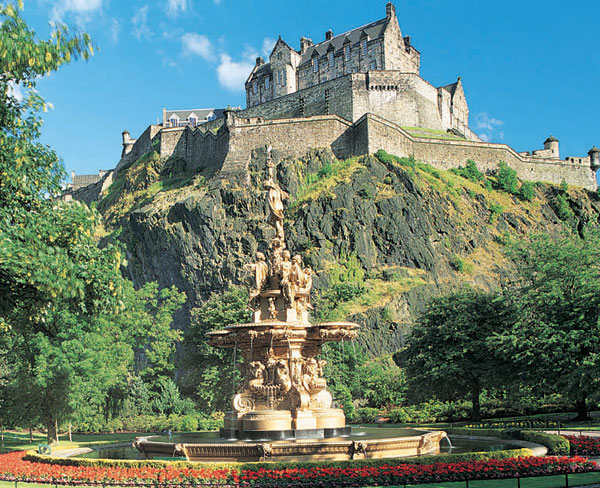On the Royal Mile to Edinburgh Castle – Scotland


Edinburgh Castle is the most famous, most frequently visited castle in Scotland, and really worth the steep entrance fee.
Edinburgh Castle was built in the 7th century and sits high on Castle rock, which is a 437 feet high chunk of black, basalt rock. Years past this rock was once a volcano.
Three sides of mighty Edinburgh Castle are surrounded by sheer volcanic cliffs. To the east, is a long, cobbled road named the “Royal Mile”.
The first record of the Edinburgh Castle being used as an actual royal residence, occurred sometime in the 11th century when Margaret, the wife of Malcolm III died there, after hearing about her husband’s death at Alnwick in 1093.
In the past, Edinburgh Castle was used for keeping valuable royal treasures and records. Kings frequently lived in it. But when William the Lion was captured at Alnwick in 1174, Edinburgh was one of a number of castles handed over to Henry II of England.
Today, dominating the inner city of Edinburgh is the most popular national monument in Scotland. A trip to Edinburgh Castle affords visitors a magnificent view of the city.
A classic drawbridge lowers over a dried-out moat from the broad Esplanade where the famous Military Tattoo is held every August.
As you approach the main entrance to the Edinburgh Castle, it is flanked by bronze statues of famous people. Legendary William Wallace. Wallace, the main character in the 1995 movie “Braveheart” starring Mel Gibson, led the Scottish resistance against Edward I. William Wallace was later executed in London. The other bronze statue is of Robert the Bruce. Bruce is Scotland’s national hero, and is fame arose from defeat of the English under Edward II at Bannockburn.
Some of the major sites to see at Edinburgh Castle are: Argyll’s Tower, Crown Square Scottish National War Memorial, French Prisons, Great Hall, Mons Meg Cannon, National War Museum of Scotland, One O’Clock Salute, Royal Palace, and St Margaret’s Chapel.
CLICK HERE for more information about the Edinburgh Castle.




